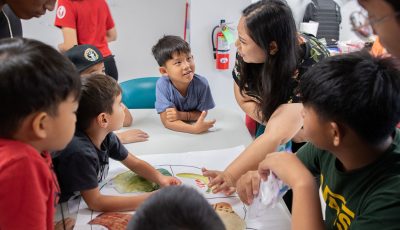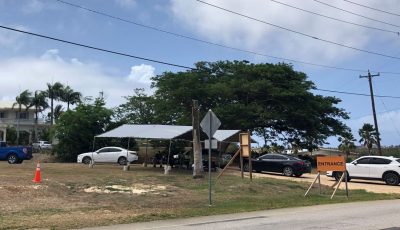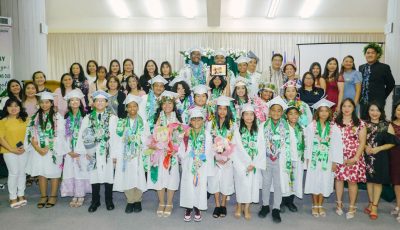PSS updating wellness policy to reflect new standards
The Public School System is currently at work on updating its wellness policy, last updated in 2006, according to Dale Roberts, Food and Nutrition Service director and member of the School Health Council.
The Health Hunger Free-Kids Act championed by first lady Michelle Obama has been broadened and made more comprehensive in recent years. According to Roberts, this comes with “a lot more check boxes” to go through to get school programs certified.
According to him, PSS completed a draft wellness policy in 2010 but it was never formally completed.
Right now, he said, they are revising the 2010 document to meet some new federal standards that were set this year, with the aim to present it to the CNMI State Board of Education by the first week of February.
“Hopefully we will have this thing done by the early part of March,” he told Saipan Tribune Wednesday.
He said a lot of the old language policy was to “consider, support, or emphasize,” but now it will be, “We will do this, and we will do that.”
“For example, we have this new ‘smart snacks in schools’ regulation that regulates every kind of food that can be available in the school. We needed to add that in to update our policy.” This, he said “puts a limits on the amount of sugar an item can have.”
According to him, FNS has an online calculator that can use information provided from an item’s food and nutrition label to see if the item “is legal to serve at a school or not.”
Every school in the U.S. that receives national school lunch program funds is required to have a wellness policy. According to Roberts, these policies have been broadened because FNS is “slowly trying to gain and make it so that everybody is eventually learning healthy lifestyle choices when they’re younger.”
To touch up the document, Roberts is now gathering comments from stakeholders, parents, teachers, school administrators, PTA officials, and even trying to get health officials to get on board for input.
For example, he said one eye doctor has a great data on diabetes rates on island.
“I’d like get to him on this committee,” he said.
Because everyone in the community has to be able to access the policy, they are making sure to make the policy readable, understandable, and culturally appropriate.
“There’s no point in making a policy that no one is going to follow,” he said.
The policy in the works is being is modeled after some school districts in the United States that are “scaled down” but still meet U.S. Department of Agriculture requirements, according to Roberts.
“It’s actually kind of a middle-of-the-road-one. It’s not too weak, and it’s not too strong. And it’s something that we can attain. So I am meeting with the groups to see what we can add and what we need to take out so it matches our community.”
The policy entails physical education and activity components, and nutrition education components, as well as the kinds of foods that can be made available in schools.
“People bring snacks to school everyday. We want to set up an environment where we are not encouraging them to do unhealthy things and that’s basically what the policy is all about.”
Roberts also said that USDA would be visiting PSS on their school meal programs by the end of February. While they would not have the policy completed by then, “we’ll have most of the process done.”



























